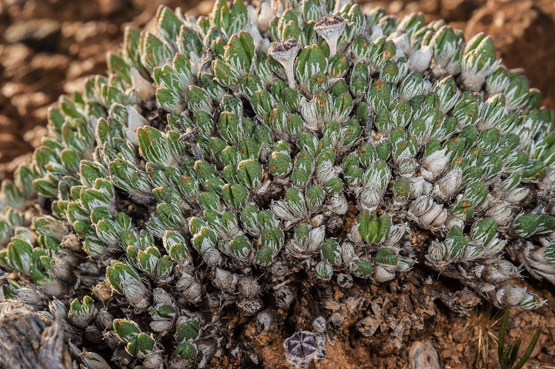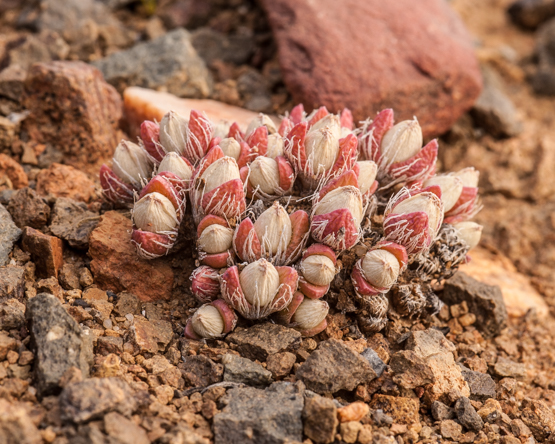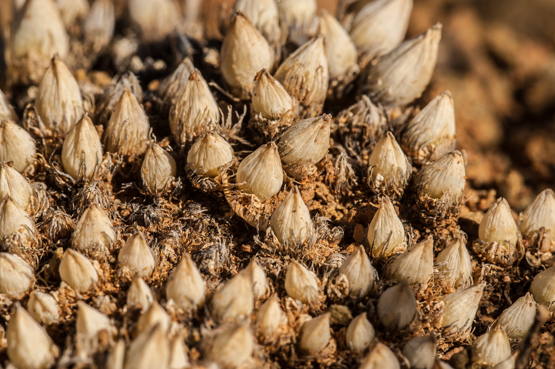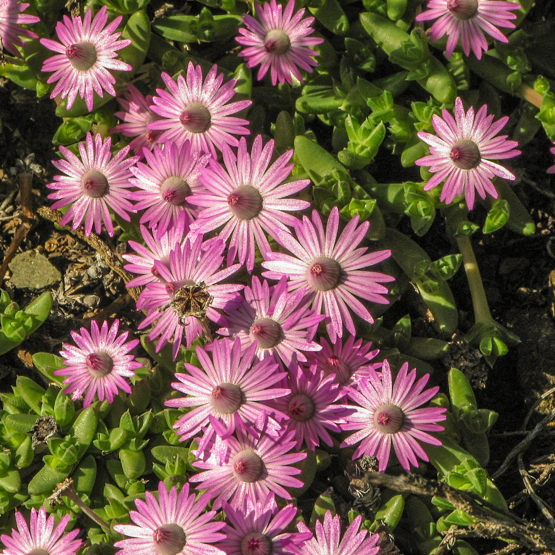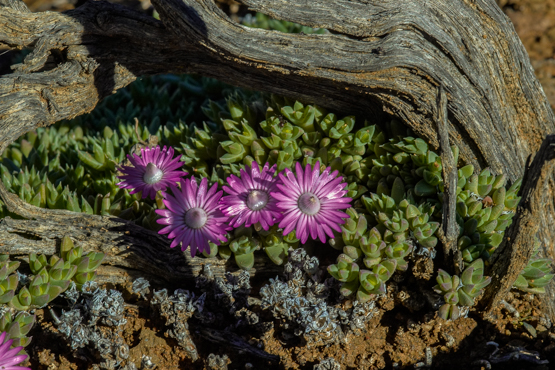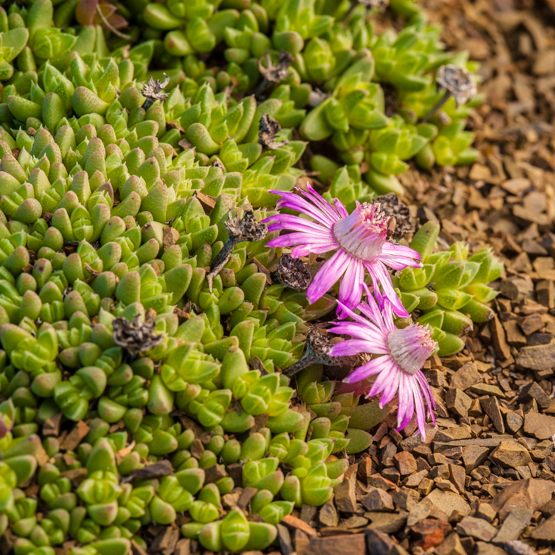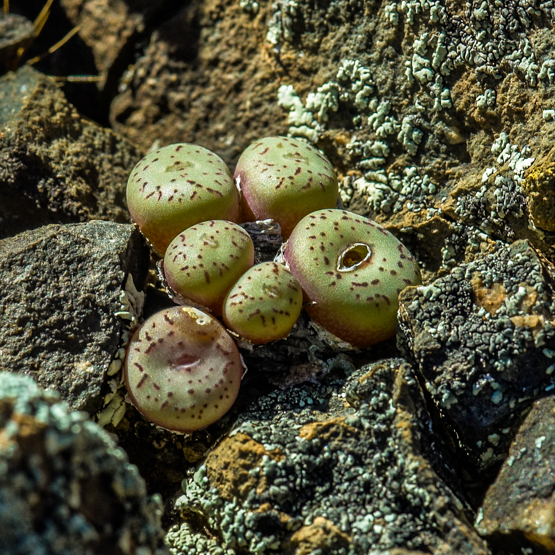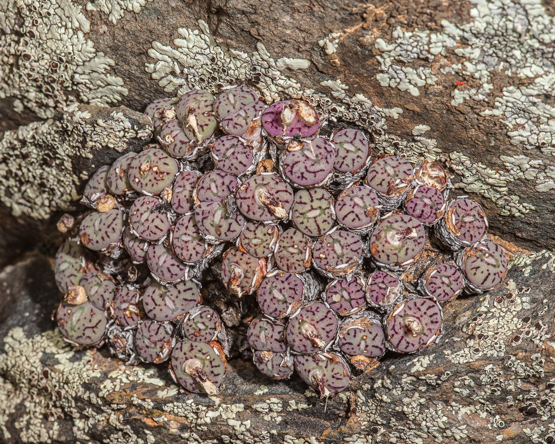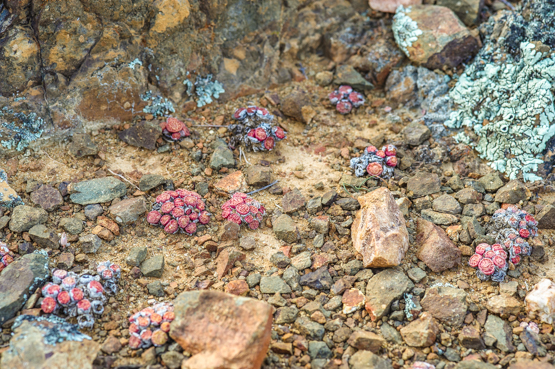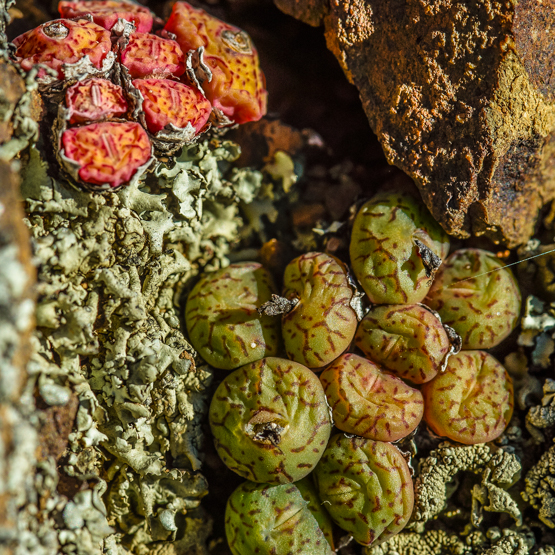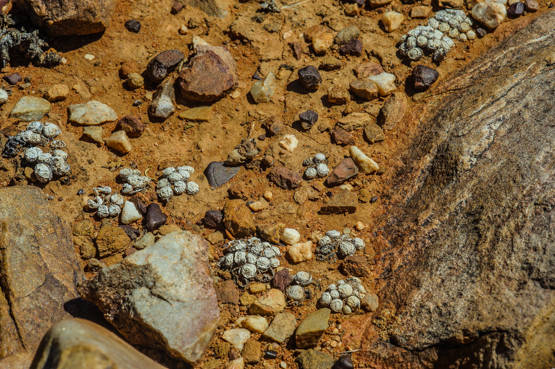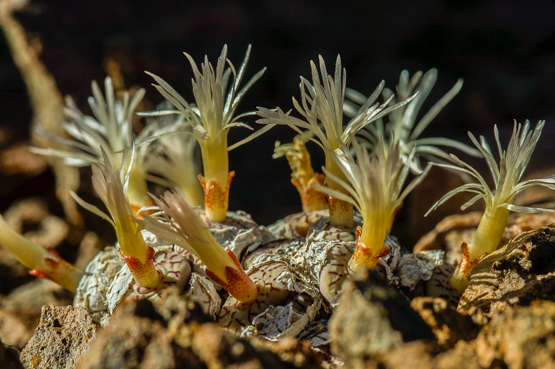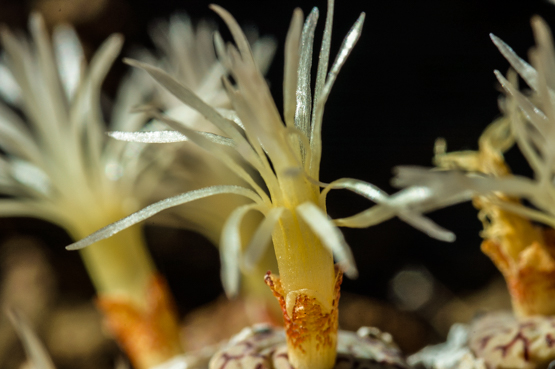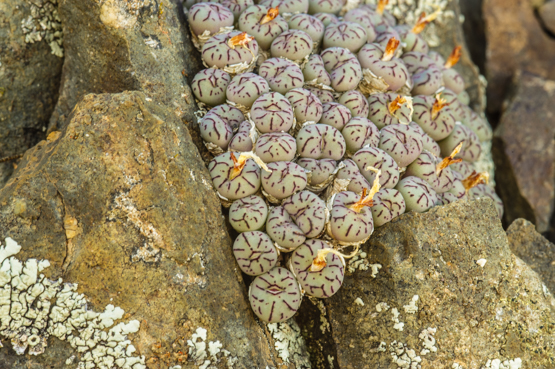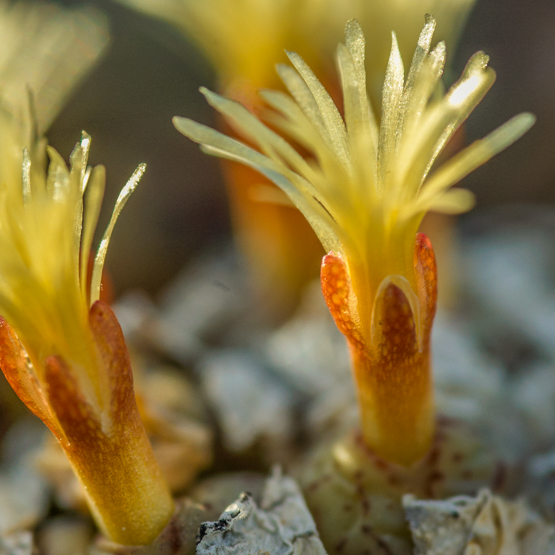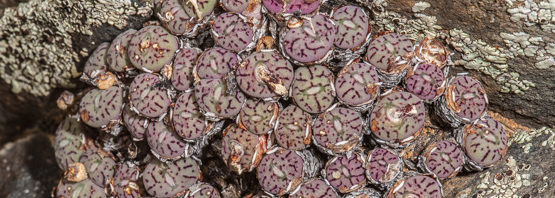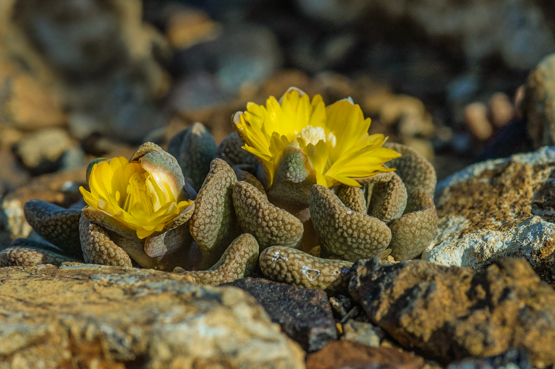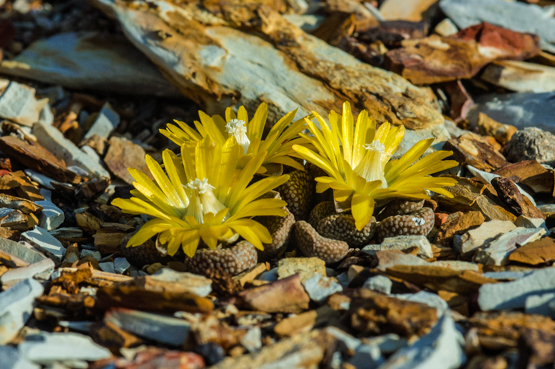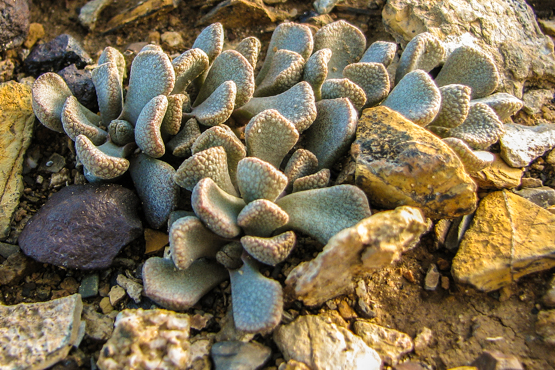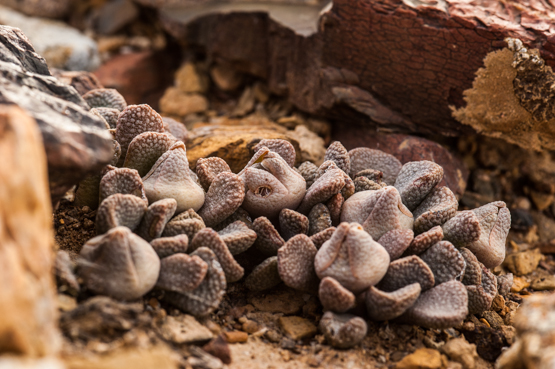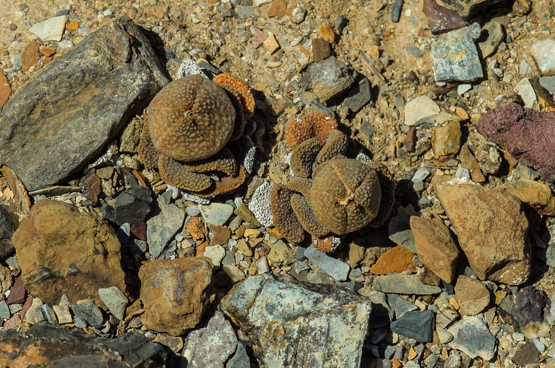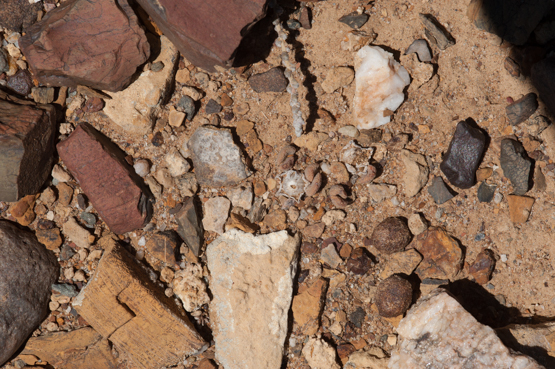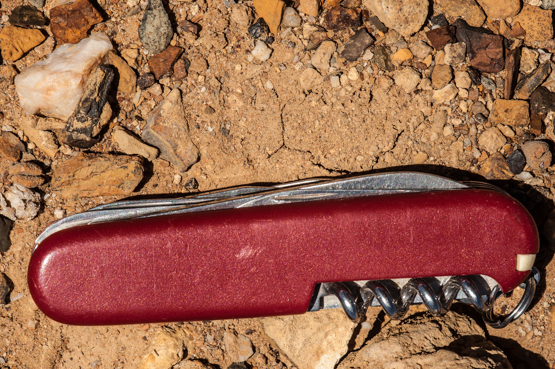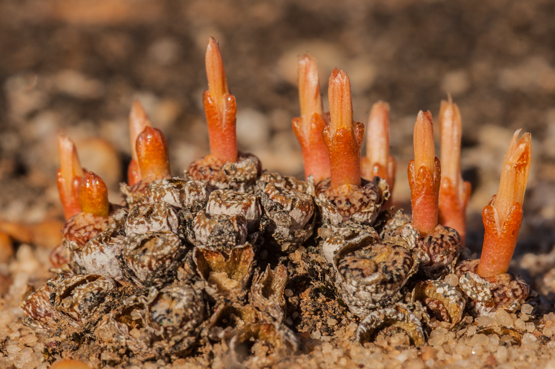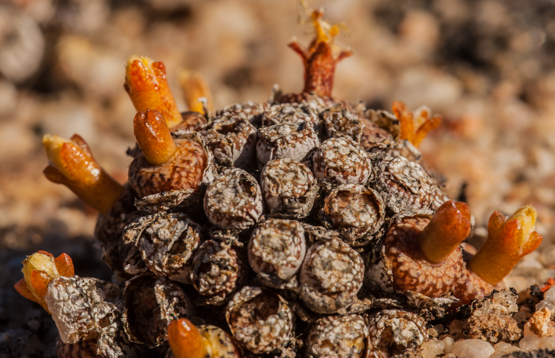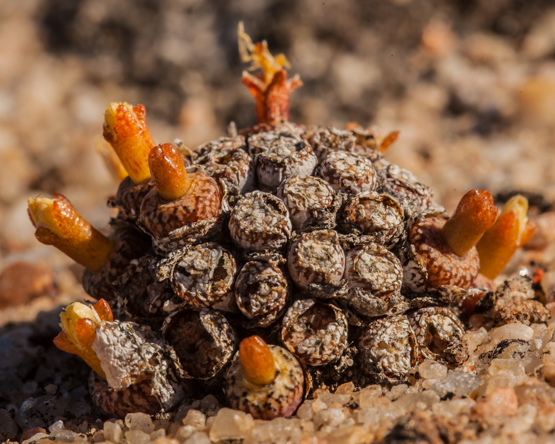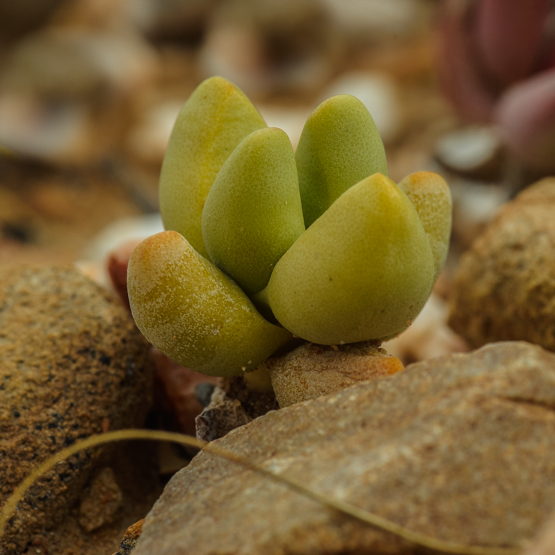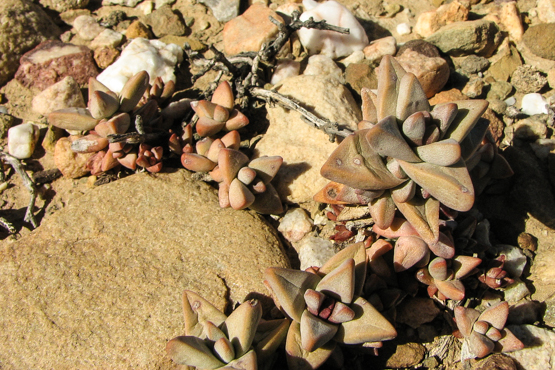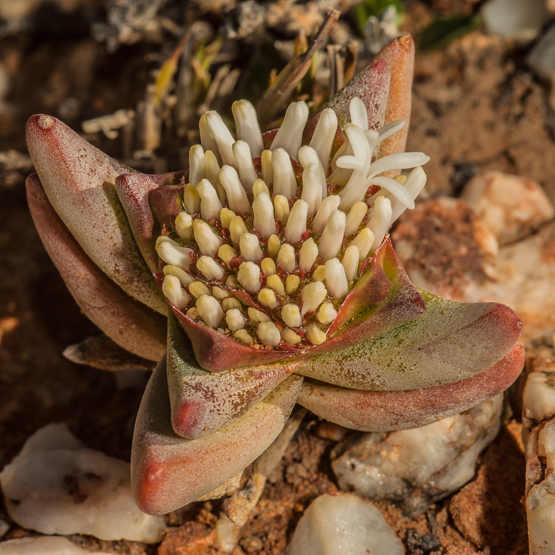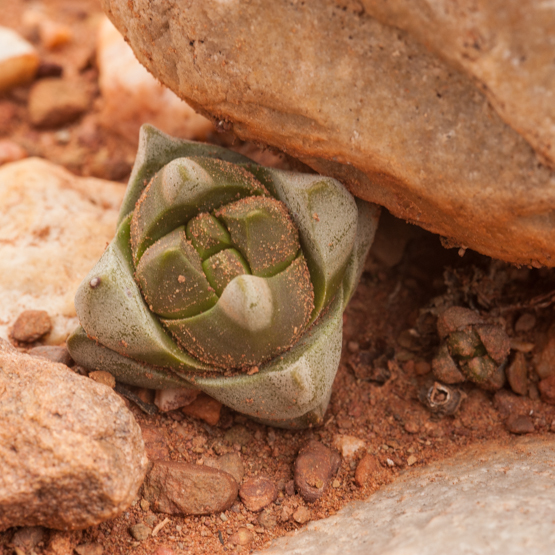It may be of interest to see what Prof. Schwantes in his magnum opus Flowering Stones and Mid-Day Flowers (1957) has to say about this “most remarkable and interesting species”: “This forms annually only two pairs of leaves to each growth which, however, are differently shaped. This phenomenon is called dimorphism of the leaf. The pair of leaves that appears at the beginning of the rainy season from out of the dry sheath is united into a long sheath at the base but developed normally above into widely separated, yawning, broad leaf tips. This pair of leaves with its comparatively broad surfaces that catch the light and absorb carbon dioxide as nourishment, provides food during the growth period. When the end of this period approaches there pushes out of the channel formed through the uniting of these normally developed leaves a peculiar, elongated, cylindrical structure which consists of two leaves joined right up to the tip. The very short ends are separated only by a slit, which shows that the growth actually consists of two thick leaves. Growths which consist of such closely united leaves are called plant bodies (corpusculum). The object of this close union can only be to reduce the evaporating surface as much as possible and to protect the young growth within from being dried up. The plant’s struggle to make the leaf pair as nearly spherical as possible is here obvious; as is known, the sphere is the form with the smallest surface area. Within these leaf pairs or plant bodies the next pair develops, which once more is less completely united. Inside the body a channel running its whole length remains open; the slowly developing leaf pair is fitted into this and draws from the plant body food and water until it has dried up to a parchment-like skin which completely surrounds the young pair so that not even the tip projects. In this condition the growth, well protected by the skin, lives through the dry period and when the rains begin the deeply buried pair of leaves quickly emerges from the skin surrounding it. In Ruschia pygmaea quite distinct leaf pairs are produced for the dry and for the rainy seasons, one of which has a large surface for assimilation, while the other serves for the protection of the resting pair.”
Tag: miniatures
Antimima pygmaea (part 1 of 2)
There are not many plants that look better or more interesting in the resting state than during active growth, but this species is certainly one of them.
The plants form low, densely branched mats to 15 cm in diameter.
The leaf pairs are dimorphic. One pair is almost fused almost completely, to 5 mm tall and 3 mm wide, developing into a conical body which turns into a dry sheath protecting the subsequent leaf pair during the dry period. These white bodies become slashed with time and are typical for the species.
The plants occur on shaly slopes in a smallish area between Worcester and Laingsburg.
Irrespective of the statement in the first sentence of this post, the plants are quite cute when in flower. The flowers are up to 18 mm across and appear in winter (July-August).
Conophytum minimum (part 3 of 3)
Conophytum minimum (part 3 of 3)
Conophytum minimum (part 2 of 3)
Conophytum minimum (part 1 of 3)
When Adrian Haworth described Conophytum minimum in 1795, it was the smallest known member of the genus Mesembryanthemum (as it was back then). Hence the specific epithet.
It is a member of the section Conophytum – “The original cones and dumplings” as Steven Hammer calls them. As in other members of this section, plants of C. minimum may vary from quite plain and dull to exquisitely marked. This variability has given rise to a long list of synonyms (26 to be exact).
The plants form rather loose mats or compact domes.
The individual bodies are conical to cylindrical, 8-15 (sometimes up to 20) mm long and 10 mm thick, elliptical in outline and with their tops usually truncate (as if cut off). They range in colour from pale green to greyish green and the tops are mottled in various degrees with dark lines and spots.
The flowers are white, pale yellow or pale pink and strongly scented. They appear in autumn (May, June). Although they are described as nocturnal, on cold days they are often open in the morning (up to 10 or 11 am) or late afternoon.
When you want to see the plants in the wild, your best chances are in the Matjiesfontein, Laingsburg, Witteberg area, where they are often locally abundant on shale, sandstone or quartzitic rocks among lichens, often finding shelter in crevices.
The photos in this post and the following two ones, are arranged chronologically so as to give you an idea what the plants look like in different times of the year.
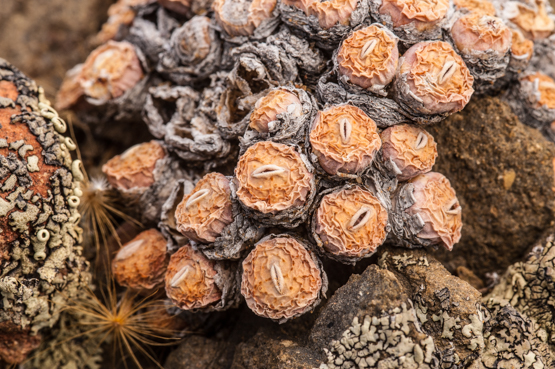
Picture taken 29 Jan. 2012
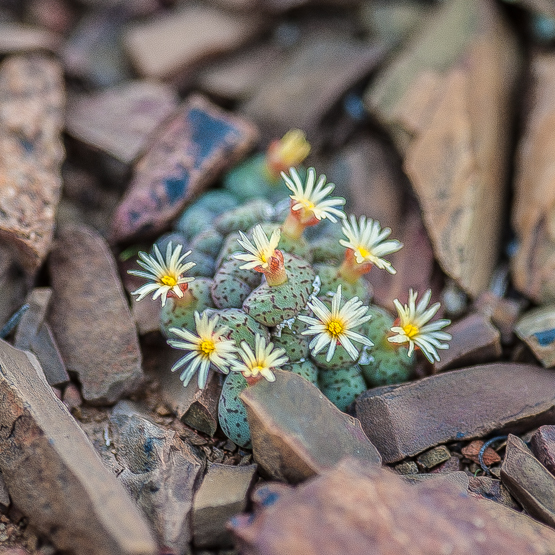
Pictures taken 6 May 2009, around 5.40 PM
Aloinopsis loganii (2)
Aloinopsis loganii (1)
Succulent plants may store water in any organ of the plant body. Usually, leaves or stems are used for this purpose, but water can also be stored in the roots.
For this reason we speak of leaf, stem and root succulents. In certain plants the distinction is not so clear-cut, because they use more than one organ for water storage. The subject of this post is a case in point.
The first four pictures were made in winter and spring (between mid July and mid October) and clearly show that the species is a leaf succulent.
Or, so it would seem. The last two photos were made in summer (late January). In #5, most of the leaves have disappeared and the plant was only found because the fruits stand out against the background. In #6, the knife points at a plant at either side of it and here too, very little of the leaves is left.
This begs the question how these plants can survive the drought and heat of the remaining summer period. For the answer we have to go beneath the surface (literally). When we do that, we will find a nice fat tuberous rootstock with enough storage capacity for the plants to aestivate (spend the summer in a dormant state).
The species is only found in a small area near Laingsburg, where most of the rainfall occurs in winter.
To give you some idea of the size of the plants: the leaves are up to about 20 mm long, 8 mm wide and 4-4.5 mm thick.
Conophytum comptonii
In an earlier post I discussed Anacampseros comptonii, growing next to this Conophytum. For more information on the habitat please follow the link.
The photos were taken at Oorlogskloof , 4 April 2012.
Crassula congesta (2)
In his revision of the genus Crassula (see yesterday’s post), Toelken makes the following remark with regard to the 2 subspecies: “…it is significant that each one can be identified without hesitation. No plants with intermediate characters have been recorded..”
To my mind, there is little doubt that the next picture shows ssp. congesta.
But the plants in the next two ones look like intermediate forms to me.
The last picture was taken just south of Calitzdorp and shows what I think is a hybrid between Crassula congesta ssp. laticephala (which was not found on this particular spot, but does occur in the general area) and C. columnaris (which was growing close by).
